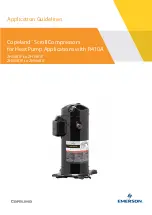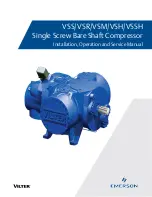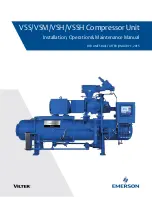
OUTLET PRESSURE GAUGE (E) FIG.6.
The outlet pressure gauge indicates the air pressure
available at the outlet side of the regulator. The pressure is controlled by the regulator and is always
less than or equal to the tank pressure.
TANK PRESSURE GAUGE (F) FIG. 6.
The tank pressure gauge indicates the reserve air pressure in the
tank.
COOLING SYSTEM.
This compressor contains an advanced design cooling system. The cooling
system is working when air is being expelled.
DRAIN VALVE (B) FIG. 7.
The drain valve is located at the base of the air tank and is used to drain
condensation at the end of each use.
MOTOR THERMAL OVERLOAD PROTECTOR (RESET (A) FIG.8).
The electric motor has an
automatic thermal overload protector. If the motor overheats for any reason, the thermal overload
protector will shut off the motor. The motor must be allowed to cool before restarting. Press the reset button.
PRESSURE RELEASE VALVE.
The pressure release valve located on the side of the pressure switch, is designed to automatically release
compressed air from the compressor head and the outlet tube when the air compressor reaches “cut-out” pressure or is shut off. The pressure
release valve allows the motor to restart freely. When the motor stops running, air will be heard escaping from this valve for a few seconds. No
air should be heard leaking when the motor is running, or continuous leaking after unit reaches “cut-out” pressure.
SAFETY VALVE (C) FIG. 6.
If the pressure switch does not shut off the air compressor at its cutout pressure setting, the safety valve will protect
against high pressure by “popping out” at it’s factory set pressure (slightly higher than the pressure switch cut-out setting).
WARNING!
: If the safety valve does not work properly, over pressurization may occur, causing air tank rupture or an explosion. Daily pull the ring
on the safety valve to make sure that the safety valve operates freely. If the valve is stuck or does not operate smoothly, it must be replaced with
the same type of valve.
*IMPORTANT BREAK-IN PROCEDURES*
NOTE: MAKE SURE ALL ASSEMBLY INSTRUCTIONS ABOVE HAVE BEEN FOLLOWED BEFORE DOING THE FOLLOWING “BREAK-IN
PROCEDURES” (MUFFLER, OIL BREATHER CAP, PRESSURE GAUGES AND FEMALE QUICK CONNECT). SERIOUS DAMAGE MAY
RESULT IF THE FOLLOWING BREAK-IN INSTRUCTIONS ARE NOT CLOSELY FOLLOWED. THESE PROCEDURES ARE REQUIRED
BEFORE THE AIR COMPRESSOR IS PUT INTO SERVICE, AFTER REPLACING THE CHECK VALVE, AND WHEN THE PISTON OR THE
CYLINDER SLEEVE ARE REPLACED.
1) Set the pressure switch lever (A) Fig.9 to the “OFF” position.
2) Plug the power cord into grounded 120V branch circuit receptacle.
3) Open the drain valve (A) Fig.10, turn it counterclockwise as shown, this will prevent air pressure build-up in the tank.
4) Move the pressure switch lever (A) Fig.11 to “ON/AUTO”. The compressor will start.
5) Run the compressor for 15 minutes. Make sure the drain valve is open and there is no tank pressure build-up (tank pressure gauge at zero).
6) After 15 minutes, close the drain valve by turning it clockwise. The air receiver will fill tank to cut-out pressure and the motor then will stop.
The air compressor is now ready for use.
OPERATION CONTROLS
& BREAK-IN PROCEDURES
FIGURE 8
FIGURE 9
FIGURE 10
FIGURE 11


























